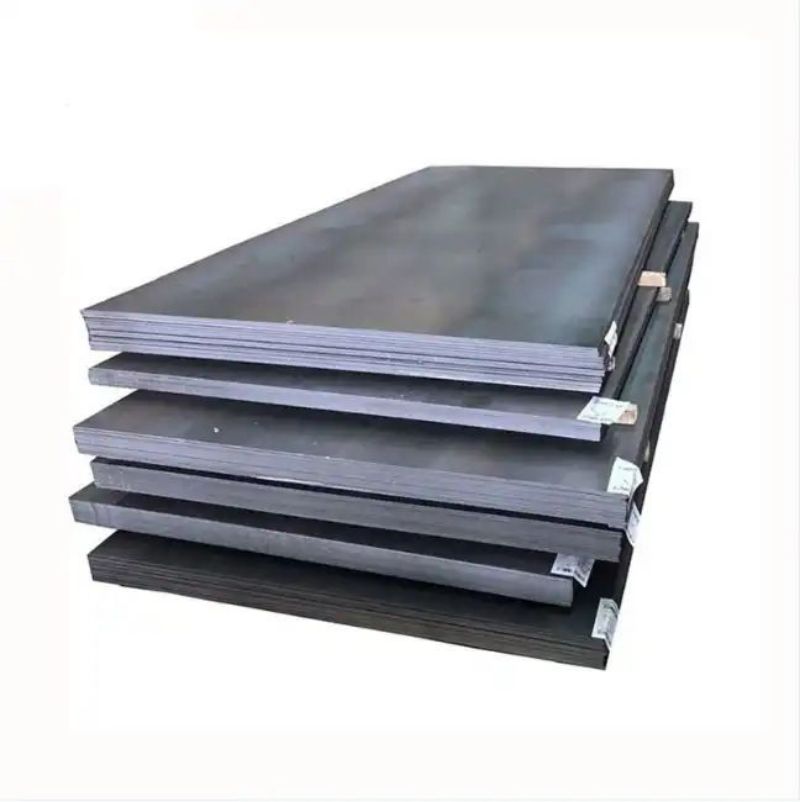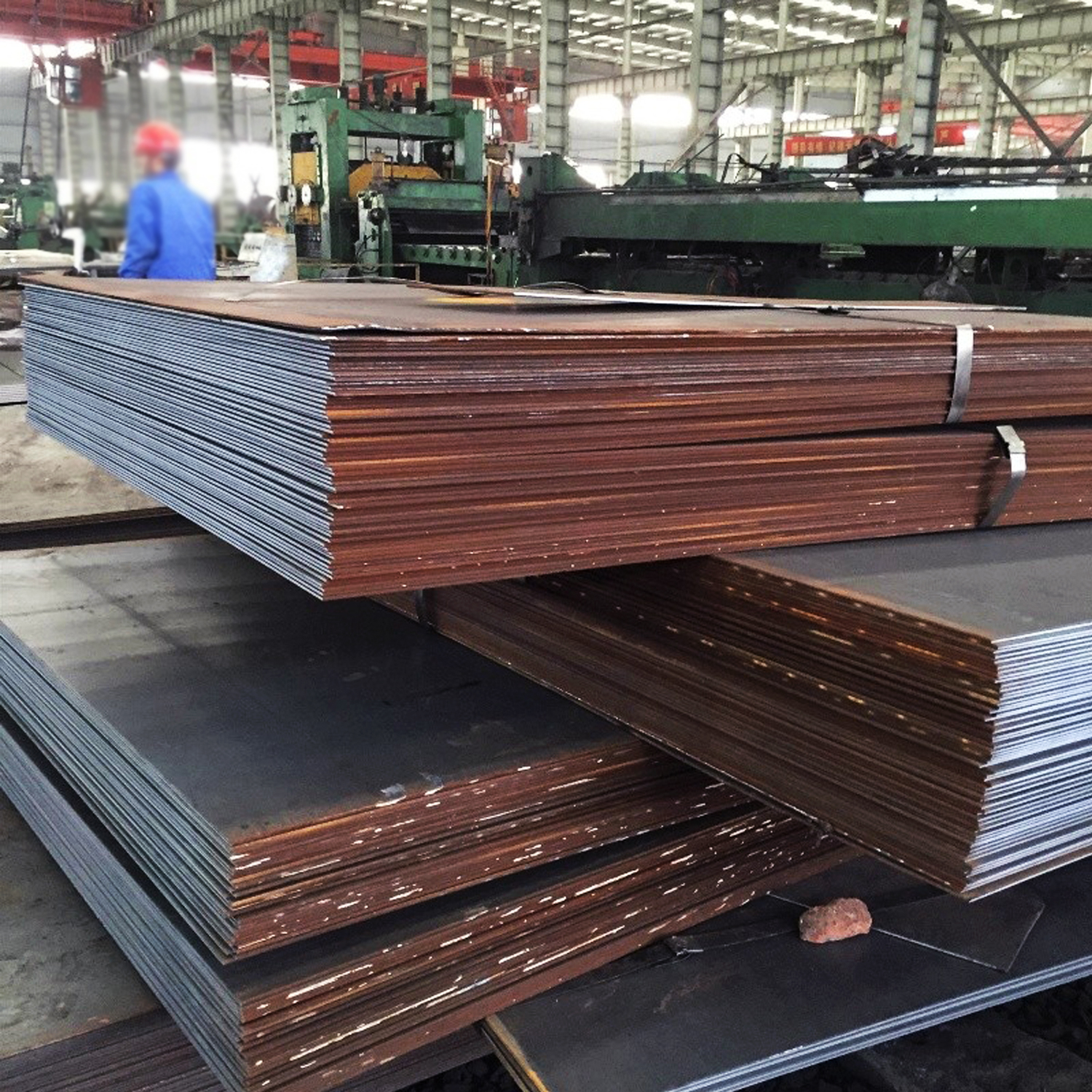Views: 0 Author: Site Editor Publish Time: 2025-05-29 Origin: Site








A36 steel is everywhere—bridges, buildings, and machines. But what makes it so widely used?This strong, weldable steel fits many jobs. It balances strength, cost, and workability.
In this post, you’ll learn what A36 steel is, why it’s trusted in construction, and how it compares to other grades.
ASTM stands for American Society for Testing and Materials. They set steel quality standards used worldwide.ASTM A36 was first introduced as a mild steel standard. It became a benchmark for structural steel plates in the U.S.Today, it's still widely used in buildings, bridges, and machinery. It’s known for consistency, reliability, and weldability.
A36 is a low-carbon structural steel. It’s hot-rolled and used in many fabrication industries.Classification: carbon structural steel Minimum yield strength: 36,000 psi (250 MPa)
You can find it in multiple forms:
● Plate
● Bar
● Angle
● Channel
● Beam
It’s easy to cut, drill, weld, and shape. That’s why manufacturers and engineers rely on it daily.
A36 steel contains a balanced mix of carbon and alloys. These elements influence how strong, tough, and weldable it is.
Element | Typical % by Weight | Role in Performance |
Carbon | ≤ 0.26% | Balances strength and weldability |
Manganese | 0.60–0.90% | Boosts toughness and ductility |
Phosphorus | ≤ 0.04% | High levels cause brittleness |
Sulfur | ≤ 0.05% | Helps machinability, may reduce ductility |
Silicon | ≤ 0.40% (often trace) | Aids strength and deoxidation |
● Carbon improves strength, but too much lowers weldability
● Manganese increases toughness and helps remove oxygen
● Phosphorus should stay low to avoid cracks
● Sulfur makes cutting easier but can reduce toughness
● Silicon adds a bit of strength, especially after hot rolling

A36 steel has a minimum yield strength of 36,000 psi (250 MPa). This means it can deform under heavy load before failing.That’s why it works well in buildings, bridges, and support frames. It flexes before breaking—important for structural integrity.
The tensile strength of A36 ranges from 58,000 to 79,800 psi. This measures how much force it takes to pull the steel apart.It’s strong enough for construction, but still easy to weld or cut. Other high-strength steels may offer more PSI but cost much more.
Ductility shows how much the steel can stretch. A36 elongates 20% to 23% before it fractures.This means it won’t snap suddenly. Instead, it bends or stretches under stress—ideal in seismic zones.
A36 offers good toughness at room temperature. It’s not brittle and can absorb moderate impacts.Its Brinell Hardness Number (BHN) is around 119–162, which balances strength and machinability.For harder applications, you may choose quenched or alloy steels. But A36 gives a great all-around performance.
A36 steel is produced through a hot rolling process.
1. That means it's shaped at high temperatures.Steel slabs are heated to over 1,600°F (870°C)
2. They’re passed through rollers to reduce thickness
3. The plate cools and forms its final shape
Hot rolling gives the plate a rougher surface and looser tolerances. But it’s fast, affordable, and ideal for structural uses.
A36 steel plates come in many sizes. Tolerances are based on ASTM A6 guidelines.
Dimension | Tolerance Example |
Thickness | ±0.01" to ±0.09" (depends on size) |
Width | ±0.25" typical |
Length | ±0.5" for standard cuts |
Plates can be cut to exact sizes or ordered as stock sheets. Common thicknesses include 1/4", 3/8", 1/2", and 1".
Hot-rolled A36 often comes with mill scale, a dark flaky coating.
● It can be left on or removed depending on use.Mill scale – Normal surface finish
● Descaled – Treated with acid or brushing
● Pickled and oiled – Cleaned and coated to prevent rust
Fabricators may sandblast or paint the surface before welding. Some buyers request a cleaner surface for better adhesion.

A36 balances moderate weight with strong yield and tensile performance. Its 36,000 psi yield strength suits most structural needs.This makes it strong enough for support but light enough to move. Ideal when weight matters, like in bridges or multi-level buildings.
Thanks to its low carbon content, A36 is easy to weld. No need for complex preheating or post-treatment.You can cut, drill, bend, or grind it without difficulty. Fabricators love how predictable and forgiving it is.It works with MIG, TIG, stick welding, and plasma cutting. Machinists can also tap threads or create clean holes easily.
A36 offers great performance at a lower cost. It’s cheaper than alloy or heat-treated steels.Because it’s so widely produced, supply is steady and pricing stable. It’s a smart choice for projects on a budget or large-scale use.
A36 meets ASTM A36 and ASME SA36 requirements. That ensures consistency in strength, dimensions, and chemistry.Most suppliers provide Material Test Reports (MTRs) with each plate.
This verifies the steel’s traceability, mechanical values, and mill origin.
Standard | Meaning |
ASTM A36 | American structural steel spec |
ASME SA36 | Boiler/pressure vessel version |
MTR Provided? | Yes (on request) |
A36 is a go-to material for building structures.
● It’s used in:Columns
● Beams
● Floor plates
● Bracing and base plates
Contractors rely on its strength and easy fabrication. It forms the skeleton of many commercial and industrial buildings.
Heavy machinery needs a stable frame. A36 is stiff enough for loads and flexible enough to resist cracking.You’ll find it in agricultural equipment, trailers, and shop tools. It’s also used in enclosures, housings, and base plates.
Bridges need strength and ductility.
A36 provides both—plus good weld performance under dynamic loads.It’s used in:
● Bridge plates
● Girders
● Truss components
● Rail platforms and anchors
In some cases, it’s paired with stronger grades for hybrid use.
Wind towers sit on giant steel foundations.
A36 offers the toughness and plate size flexibility needed.It’s used in:
● Wind turbine base flanges
● Mounting plates
● Solar panel frames
● Transmission structures
As green energy grows, A36 remains a core material behind the scenes.
A36 is hot rolled; 1018 is cold rolled. That means A36 has a rougher surface but is cheaper and easier to weld.1018 offers tighter tolerances and higher yield strength (~370 MPa). It’s often chosen for precision parts where finish matters.
Grade | Yield Strength | Surface Finish | Weldability | Price |
A36 | 250 MPa | Rough (HR) | Excellent | Affordable |
1018 | 370 MPa | Smooth (CR) | Moderate | Higher |
S235JR is the European equivalent to A36. Both are mild steels used in structural applications.S235 offers slightly lower yield (~235 MPa), but behaves similarly. If you're sourcing globally, they’re often interchangeable.
Property | A36 | S235JR |
Yield Strength | 250 MPa | ~235 MPa |
Standard | ASTM (USA) | EN (Europe) |
Weldability | Excellent | Excellent |
SS400 is the Japanese standard closest to A36. Both are hot-rolled mild steels with similar strength and weldability.SS400 yield is around 245 MPa, just below A36. They’re often cross-referenced in global procurement.
Property | A36 | SS400 |
Yield Strength | 250 MPa | ~245 MPa |
Origin | U.S. | Japan |
Usage | Structural | Structural |
A36 responds well to flame cutting. Oxy-fuel torches cut through thick plate easily.Plasma cutting gives smoother edges, especially for thin or medium plates. Laser cutting is possible but not as common for A36.Always check for warping in thicker plates after thermal cutting.
Drill speeds should stay low to moderate.
Use high-speed steel (HSS) bits for cleaner holes.For tapping, A36 accepts threads well.
Use cutting fluid to reduce friction and extend tool life.Punching and countersinking are also possible with proper setup.
A36 steel welds with MIG, TIG, or stick processes.
No special filler is usually required.Preheating may help for thicker plates or colder conditions.
Avoid excessive heat input to reduce warping.For heavy sections or structural welds, follow AWS D1.1 guidance.
Back-gouging or multi-pass welding may be needed on thick joints.
A36 plates are sold in many standard sizes.
● Common thicknesses include:3/16" (4.76 mm)
● 1/4" (6.35 mm)
● 3/8" (9.5 mm)
● 1/2" (12.7 mm)
● 1" (25.4 mm)
Widths range from 36" to 120", with lengths up to 480".
Plates can be flame cut, waterjet cut, or plasma profiled. Shops offer beveling, slotting, and hole punching.Custom dimensions are common in structural and machinery use. Send drawings or CAD files for exact profiling.
Many suppliers carry stock plate in full and half sheets. Custom orders take longer but offer precision cuts and finishes.
Option | Best For |
Stock Plates | Fast delivery, general use |
Custom Cuts | Precision fit, complex projects |
Lead time depends on steel mill, volume, and finish requirements.
A36 steel offers great strength, flexibility, and value. It works well in construction, machinery, and infrastructure.Its weldability and cost make it a favorite choice. For exact sizes or certifications, talk to your steel supplier.
A: Yes, A36 steel is ferromagnetic because it contains iron and no significant non-magnetic alloying elements.
A: It can, but it needs protective coatings or galvanizing to resist corrosion in salty or wet environments.
A: A36 plates are commonly available up to 8 inches thick, with custom mill orders offering more.
A: No, it’s not designed for pressure vessel use. Use ASME SA516 or SA36 instead for certified applications.
A: Not effectively. A36 is not alloyed for quenching. Surface hardening methods like carburizing may help.